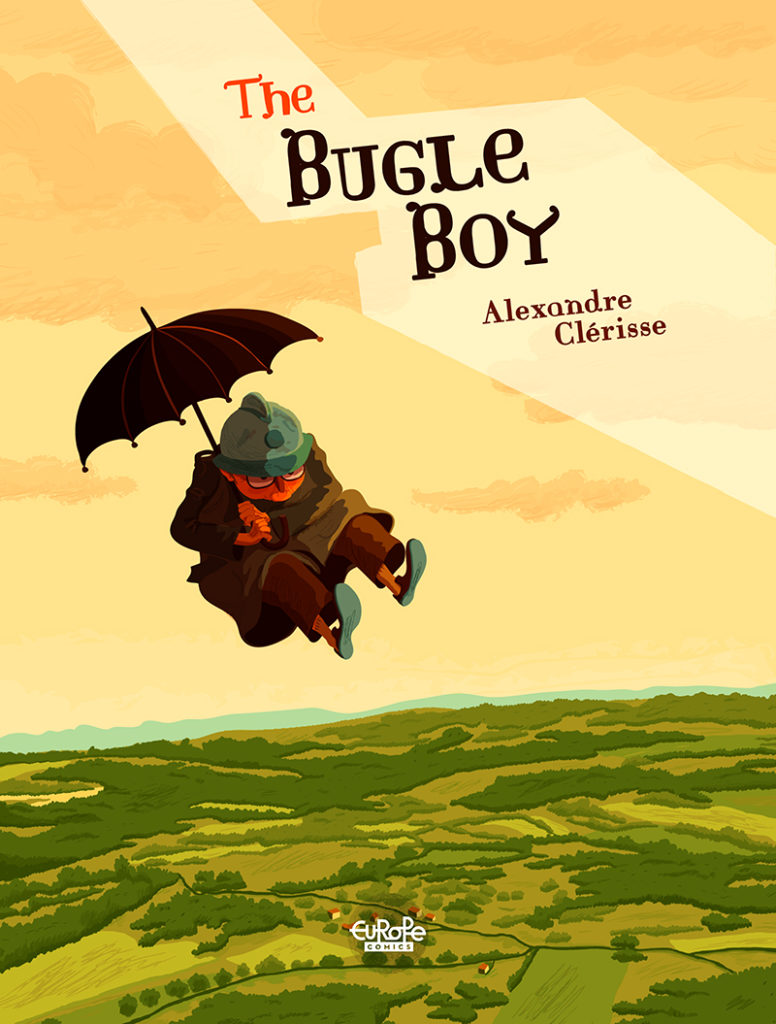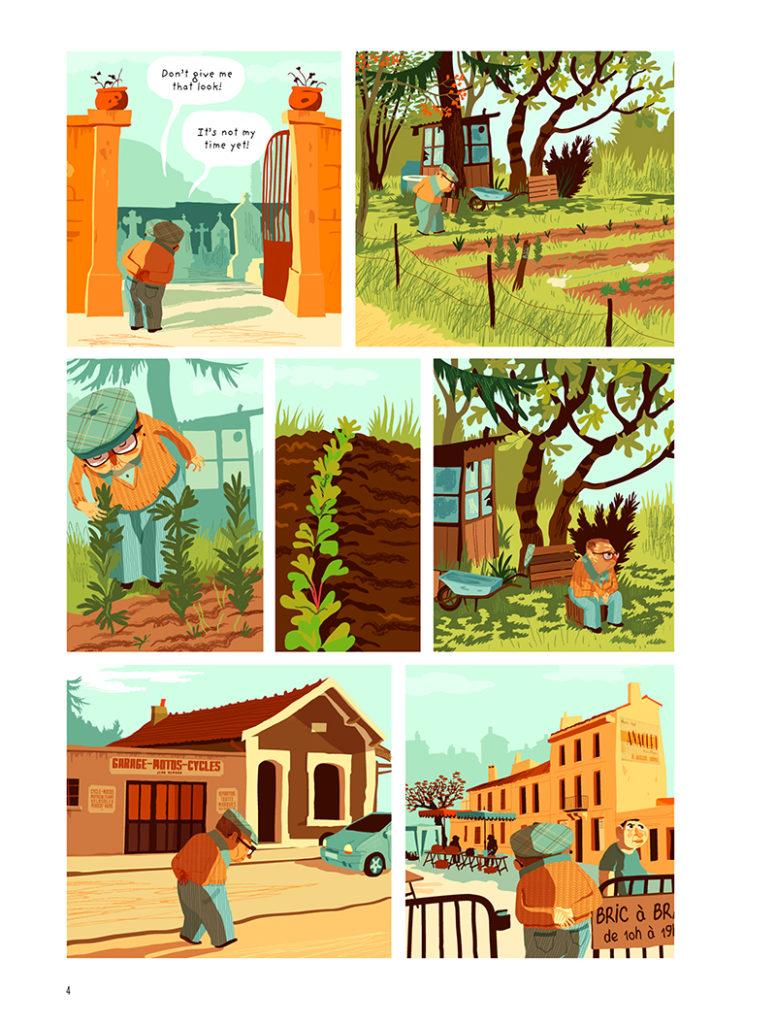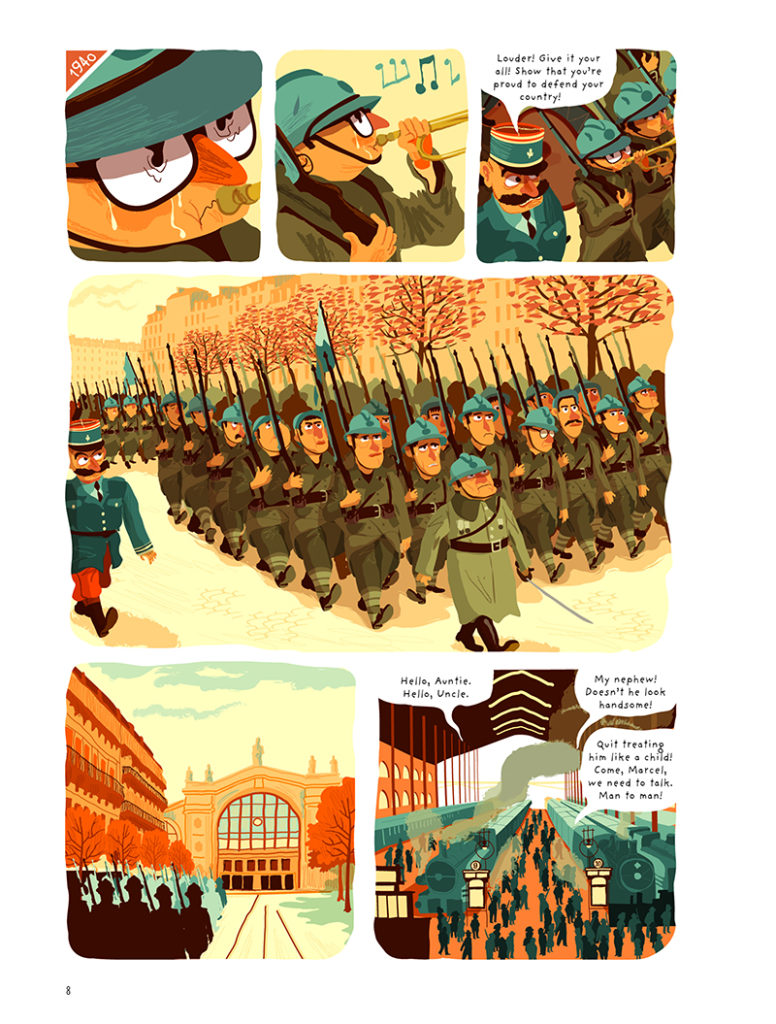Eighty-five-year-old Marcel lives alone with his memories of World War II — his short-lived days as a soldier before his capture and imprisonment by the Germans. He’s got one thing left to do before he dies: find the bugle he buried by the Maginot Line. When his granddaughter Andrea stops by with her burgeoning rural taxi business, he hops a ride to the site of his regiment’s defeat… only to find things have changed. This is Alexandre Clérisse’s fierce, tender, and timely rumination on the horrors of war and the lies we tell ourselves.
Alexandre, tell us the story behind The Bugle Boy.
It’s a true story. When I was little my grandfather told me the story of his life during World War I. He was a bugler in the army, and during the fighting his commanders asked him to bury his bugle for fear of being spotted, as the copper bugle shined too brightly in the sun. Soon afterward they were taken prisoner… I imagined that the instrument was still buried there and that a grandfather like mine would come back later on in search of it. It’s a pretext that allows the character to revive his memories. There are two levels of reading: the present, with the grandfather and his granddaughter who helps him search for the bugle; and the past, through which we discover the circumstances and reasons for the bugle’s hiding place.
Did the success of Jazz Club, your first published album, change anything in your way of working?
After the book’s release, I met with readers and I discovered their opinions, what they liked and why. I saw what kind of story I could work toward depending on my own desires and the public’s feedback. For The Bugle Boy I’m really happy because my grandfather was delighted to see his story brought to life.
Source: www.dargaud.com
Header image: The Bugle Boy © Alexandre Clérisse / Dargaud




























